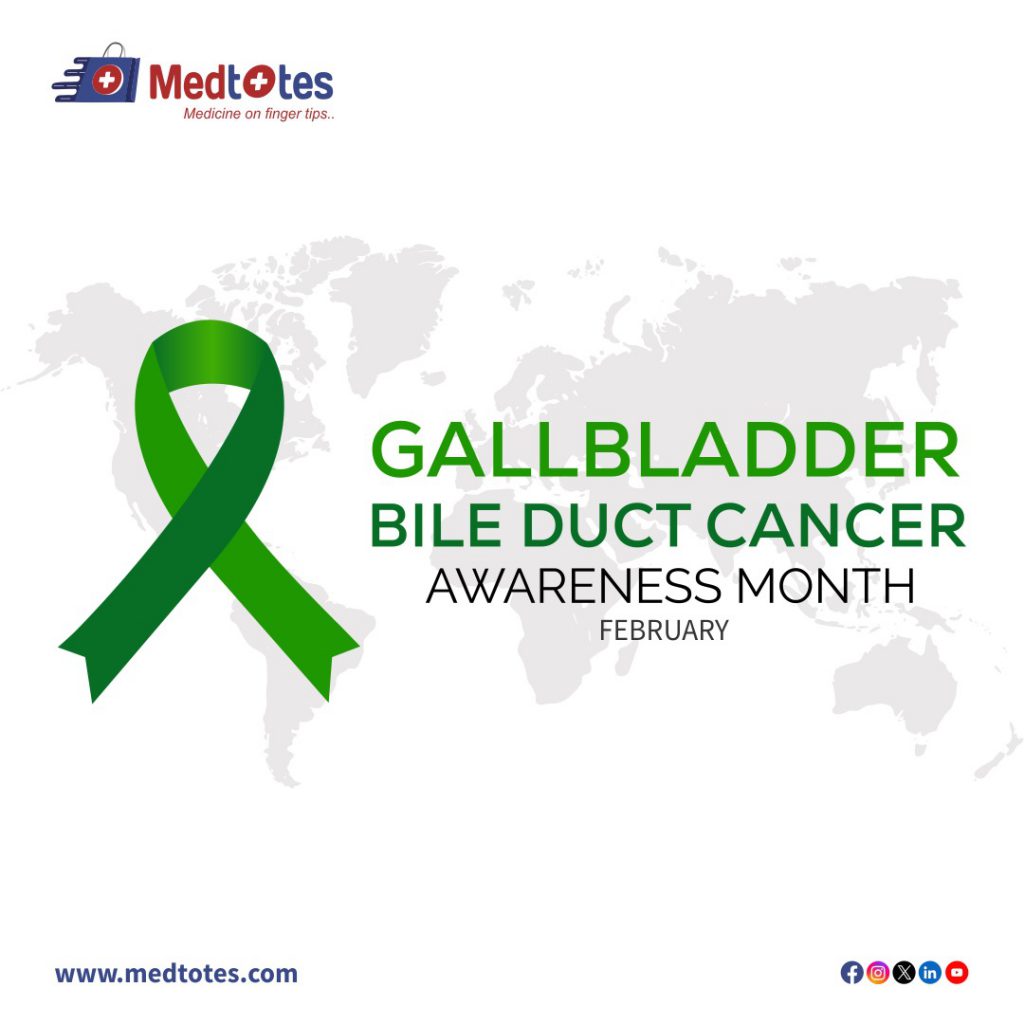I. INTRODUCTION
Gallbladder and Bile Duct Cancer Awareness Month is a February event aimed at raising awareness about rare and aggressive forms of cancer affecting the gallbladder and bile ducts. The month educates the public about symptoms, risk factors, and treatment options, aiming to improve early detection and patient outcomes. Often undiagnosed, these cancers have a poorer prognosis and have limited treatment options. The awareness month encourages individuals to seek medical attention for symptoms like abdominal pain, jaundice, or unexplained weight loss. By providing information about the signs and symptoms of gallbladder and bile duct cancer, this awareness month empowers individuals to recognize potential warning signs and seek medical help promptly.

II. TYPES OF GALLBLADDER AND BILE DUCT CANCER
Gallbladder Cancer:
- Adenocarcinoma: This is the most common type of gallbladder cancer, accounting for the majority of cases. It originates from the glandular cells lining the inner surface of the gallbladder.
Bile Duct Cancer (Cholangiocarcinoma):
- Intrahepatic Cholangiocarcinoma: This type of bile duct cancer occurs within the liver’s bile ducts.
- Perihilar (Hilar) Cholangiocarcinoma: Also known as Klatskin tumors, these cancers develop at the convergence of the right and left hepatic ducts, near the hilum of the liver.
- Distal cholangiocarcinoma: This type arises from the bile ducts outside the liver, closer to the small intestine.
Rare Types:
- Adenosquamous Carcinoma: A rare sub-type of gallbladder and bile duct cancer that contains both glandular (adenocarcinoma) and squamous (squamous cell carcinoma) components.
- Small Cell Carcinoma: An uncommon sub-type characterized by small, round cells resembling those found in small cell lung cancer.
- Sarcomatoid Carcinoma: Another rare subtype characterized by the presence of both carcinomatous (epithelial) and sarcomatous (mesenchymal) components.
III. SYMPTOMS OF GALLBLADDER AND BILE DUCT CANCER
- Abdominal pain
- Jaundice (yellowing of the skin or eyes)
- unexplained weight loss
- Nausea or vomiting
- Fever
- Itchy skin
- Pale-colored stools
- Dark urine
IV. CAUSES OF GALLBLADDER AND BILE DUCT CANCER
- Chronic inflammation: Prolonged inflammation of the gallbladder or bile ducts, often due to conditions like gallstones, primary sclerosing cholangitis (PSC), or chronic infections, can increase the risk of cancer development.
- Gallstones: The presence of gallstones in the gallbladder can lead to irritation and inflammation, which may contribute to the development of gallbladder cancer.
- Bile duct diseases: Certain conditions affecting the bile ducts, such as bile duct cysts, Caroli disease, and choledochal cysts, can increase the risk of bile duct cancer.
- Biliary tract abnormalities: Congenital abnormalities or structural defects in the bile ducts may predispose individuals to bile duct cancer.
- Chronic infection: Chronic infection with pathogens like liver fluke parasites increases the risk of bile duct cancer, especially in endemic regions where these parasites are prevalent.
- Liver disease: Chronic liver diseases, including cirrhosis and hepatitis B or C infection, can increase the risk of developing bile duct cancer.
- Age and gender: Gallbladder and bile duct cancer are more common in older individuals, with the risk increasing with age. Additionally, bile duct cancer is more prevalent in males compared to females.
- Genetic factors: Inherited genetic mutations, such as in genes related to conditions like Lynch syndrome, can predispose individuals to gallbladder and bile duct cancer.
- Smoking: Tobacco smoking has been identified as a risk factor for gallbladder cancer.
- Obesity: Obesity and being overweight are associated with an increased risk of developing gallbladder cancer.
- Environmental exposures: Exposure to certain environmental toxins or carcinogens may contribute to the development of gallbladder and bile duct cancer, although specific agents have not been clearly identified.
- Family history: Having a close relative, such as a parent or sibling, with gallbladder or bile duct cancer increases the risk of developing these cancers.
- Diabetes: Individuals with diabetes have a higher risk of gallbladder cancer compared to those without diabetes.
V. COMPLICATIONS ASSOCIATED WITH GALLBLADDER AND BILE DUCT CANCER
- Complications of gallbladder and bile duct cancer can include jaundice, a yellowing of the skin and eyes due to blocked bile ducts.
- Other complications may include abdominal pain and discomfort, weight loss, and loss of appetite.
- In the advanced stages of the disease, complications can also include liver failure and the spread of the cancer to other organs.
- Treatment for gallbladder and bile duct cancer can also lead to complications, such as infection or bleeding.
- It is important for individuals with these types of cancer to closely monitor their symptoms and seek medical attention if any complications arise.
VI. CONCLUSION
In conclusion, Gallbladder and bile duct cancer can cause significant health complications in both early and advanced stages. It is crucial for patients to be vigilant and proactive in monitoring symptoms and seeking medical help promptly to prevent further complications and improve treatment outcomes. This increases the chances of early detection and effective management of gallbladder and bile duct cancer.
Download our app: https://bit.ly/3tkQkFy
